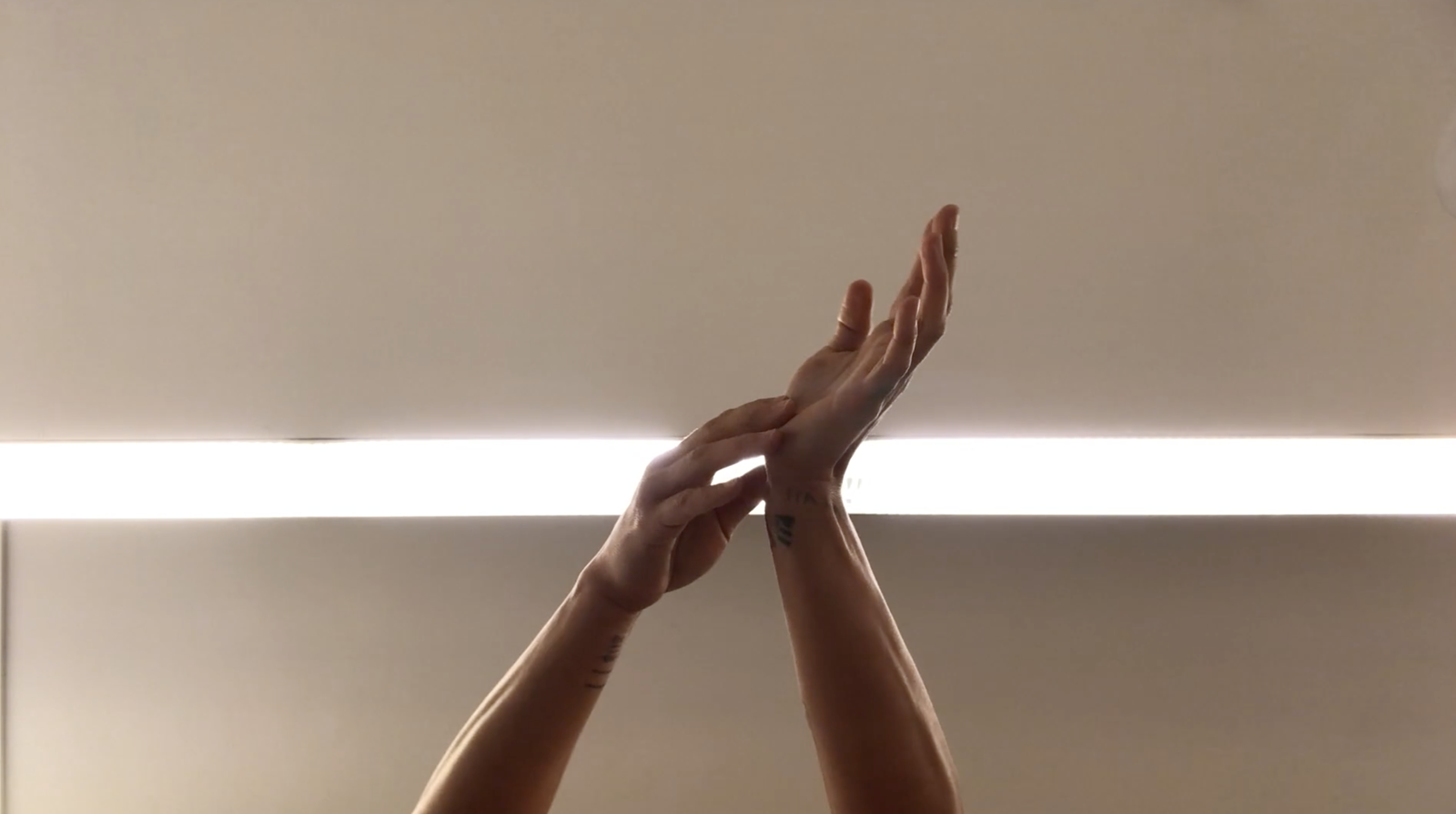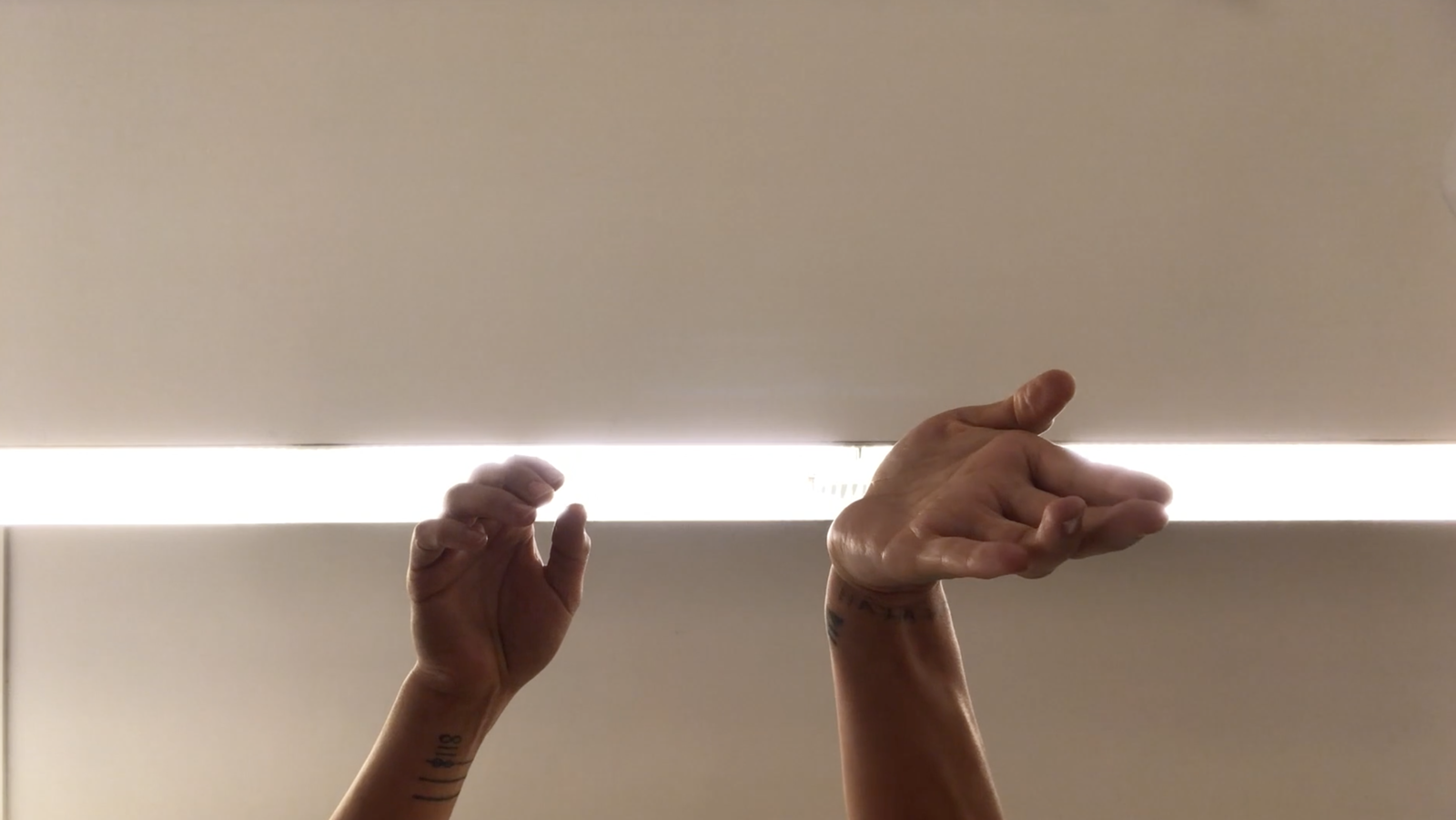Haptic Entanglements
Organs of Touch
A mail conversation with
Laura U. Marks
Between March and April, the editors of the essay series Haptic Entanglements exchanged ideas with media scholar Laura U. Marks about the haptic gaze in theater and the false distinction between seeing and touching.
by Rahel Spöhrer und Joshua Wicke
published on 20. September 2021
Filmstill from 1,000 caresses, 2018, by Tosh Basco. 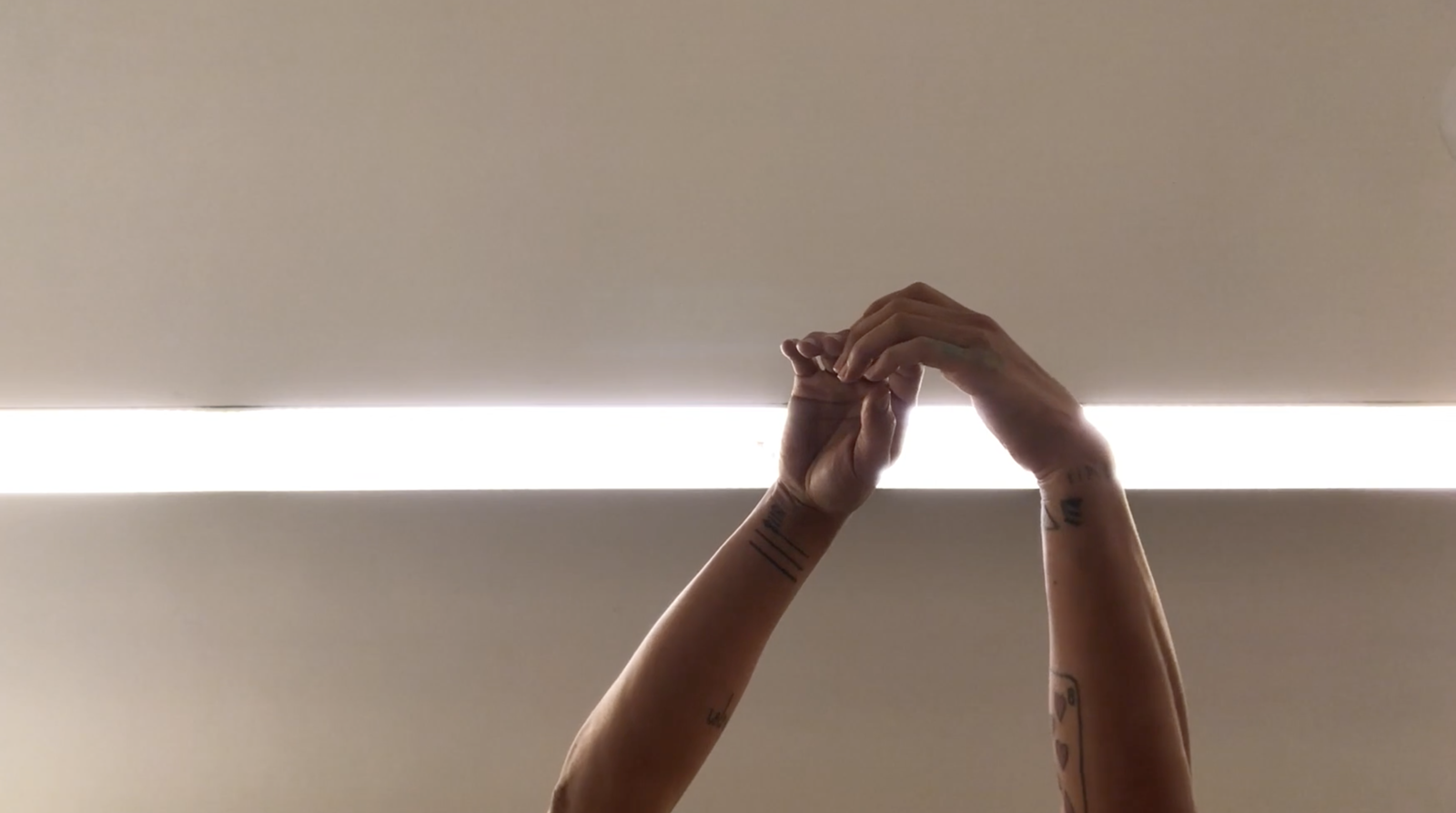
From: Rahel Spöhrer & Joshua Wicke
Sent: Mon 2021-03-01 12:20 PM
To: Laura Marks
Subject: Haptic Entanglements
Dear Laura,
We´re very excited about the opportunity to have this conversation with you. As we already wrote in our request, reading your works on haptic aesthetics has been a great source of inspiration preparing this text-series.
Sometimes you notice what has been there, only when it vanishes. To us, this seems to be the case with the topic of touch in theatre - a medium that understands itself primarily in terms of visuality: theatrón literally means a place for viewing. In classical theatre the order of vision often seemed rigid to us, constituting a gaze that is rather disembodied, identificatory.
Your notion of the haptic gaze struck us as a liberation from the dichotomy between what we see and what we touch.
You developed the term 20 years ago when you were thinking about video aesthetics. So we wonder: How do you describe haptic visuality today, what is the haptic gaze, and what were the aesthetic-political implications when you developed the term back then?
We're excited to hear back from you! Till soon!
Joshua & Rahel
From: Laura Marks
Sent: Mon 2021-3-8 7:52 AM
To: Rahel Spöhrer & Joshua Wicke
Dear Joshua & Rahel,
I’m really pleased that my work on haptic visuality has allowed you to see the theater in a new way. I suspect it revived what you always knew to be true, as practitioners. I like your characterization of the gaze of classical theater as driven by identification and representation, as with classical and much of contemporary cinema. But even in the classical theater (which I freely admit I do not know very well) there are many elements that appeal to the sense of touch through vision and sound. Lighting design, music and sound effects, costumes, textiles, and materials, actors’ gestures and the grain of their voices, can all arouse a multisensory response in audiences. The audience can potentially exercise haptic visuality even if the theater piece does not explicitly invite it.
I still describe haptic visuality as a way of looking that does not isolate, master, or seek to identify what is beheld, but instead merges with it. It usually works in a dialectic with optical visuality. Where optical visuality perceives things from without and as separate from the beholder, haptic visuality opens a continuum between the beholder and the beheld. An artwork can encourage haptic perception.
The politics of haptic visuality are that it opens up the beholder and makes them more vulnerable and to the world. No longer a hierarchical relationship (in either direction) but one of mutuality. Of course, since I observed these qualities in artists’ media of the 1990s—especially works by immigrant, minority, and feminist makers—the haptic image has entered the mainstream. An image that invites the viewer to yield can be used in many ways, not necessarily healthy ones.

Still from: Sarah Kantrowitz and Paul Clay, I Missed You (1:13,1.7 MB, 0:04 processing time)
From: Rahel Spöhrer & Joshua Wicke
Sent: Wed 2021-3-10 11:17 AM
To: Laura Marks
Dear Laura,
Thank you so much for your email and answer!
One piece that came to our mind when reading your words is a choreography by Trajal Harrell to Keith Jarrett's Köln Concert, shown after the first and before the second lockdown at Schauspielhaus Zürich.
Rahel: "In autumn 2020, I entered the theatre, nervous and insecure because of the new rules that are now structuring our public spaces. A brief moment of stillness as I sank into one of the red velvet cushions that swallow all sounds, hiding in the darkness, sensing other bodies around me, the auditorium hushed, as the concentration rose, waiting for the show to begin. At the latest when the dancers began to move with Joni Mitchell's voice singing "I've looked at clouds from both sides now", my gaze followed the directions of movement, lines and shapes, sliding along skin, hair, fabrics, getting caught up in multiple details, hanging on to movements of folding and unfolding. As I watched, I got lost in multiple surfaces, momentarily losing sight of my physical boundaries, being simultaneously there, in those movements, those textures, and here, in the velvet seat; oscillating between self-consciousness and self-loss, feeling my body's reactions to the slightest shifts, feeling as if I were stroking shapes and silhouettes while being touched by many subtle gestures."
Discussing this experience, we found it particularly interesting that this "haptic gazing" not only opened me up to what was happening on stage but also heightened my awareness of my own physical condition as well as my immediate surroundings.
We wonder if a haptic theatre not only restructures the relationship between beholder and beheld but also intervenes in the beholder's self-perception and creates an awareness of, let's say, a mutual and potentially erotic dependency?
Furthermore, we would like to return to your comment about a possible use of haptic aesthetics for not so healthy purposes. We wonder how haptic aesthetics relate to a new "aesthetic" in other fields (companies and institutions) that use softness, openness, intimacy for management purposes?
Do you think we’ve seen something like "haptic tactics and strategies" emerging in recent years?
Please excuse the rather long email.. Feel free to connect to what appeals to you most!
From: Laura Marks
Sent: Thur 2021-3-25 16:33 PM
To: Rahel Spöhrer & Joshua Wicke
Dear Rahel and Josh,
(I couldn’t see the recording, but I watched some other works by Trajal Harrell—wonderful!)
What a beautiful description of your experience of Trajal Harrell’s performance! It’s wonderful when this happens—when our look invests all the surfaces and textures of a performance, sometimes resolving to appreciate individual figures, and then dispersing again. I note how there’s a slight leveling between human and nonhuman entities in your observation of the performance—which is great, as dance explores the beyond-human becomings of the body. It makes sense to me that your sense of touch completed the sensuousness of what you were seeing and hearing.
I imagine you also noticed that haptic looking is a skill you can exercise and develop; a skill of opening yourself to what you perceive. You don’t mention this, but developing your openness of perception and feeling, you also cultivate your capacity to empathically embody the experience of the beings you are seeing and hearing.
This is why I get so angry when people assume that to look is to objectify another. Embodied visuality, of which haptic visuality is a category, is empathetic. To look at another is to feel their experience and grow closer to them, and necessarily to make oneself vulnerable—not exactly to the being you are looking at, but to what might happen in the experience of looking.
You are completely right that (audiovisual) haptic images, and more broadly, images that appeal to embodiment and affect, are now being used to train and manage audiences. Of course, very quickly these techniques were take up for marketing reasons: cultivating a desiring vulnerability in the viewer/listener, then introducing a commodity. What I object to more is movies that use haptic images and haptic sound to plunge the viewer into violent situations. Still, just as a haptic way of looking can be cultivated, I believe viewers can train themselves to disengage when necessary.
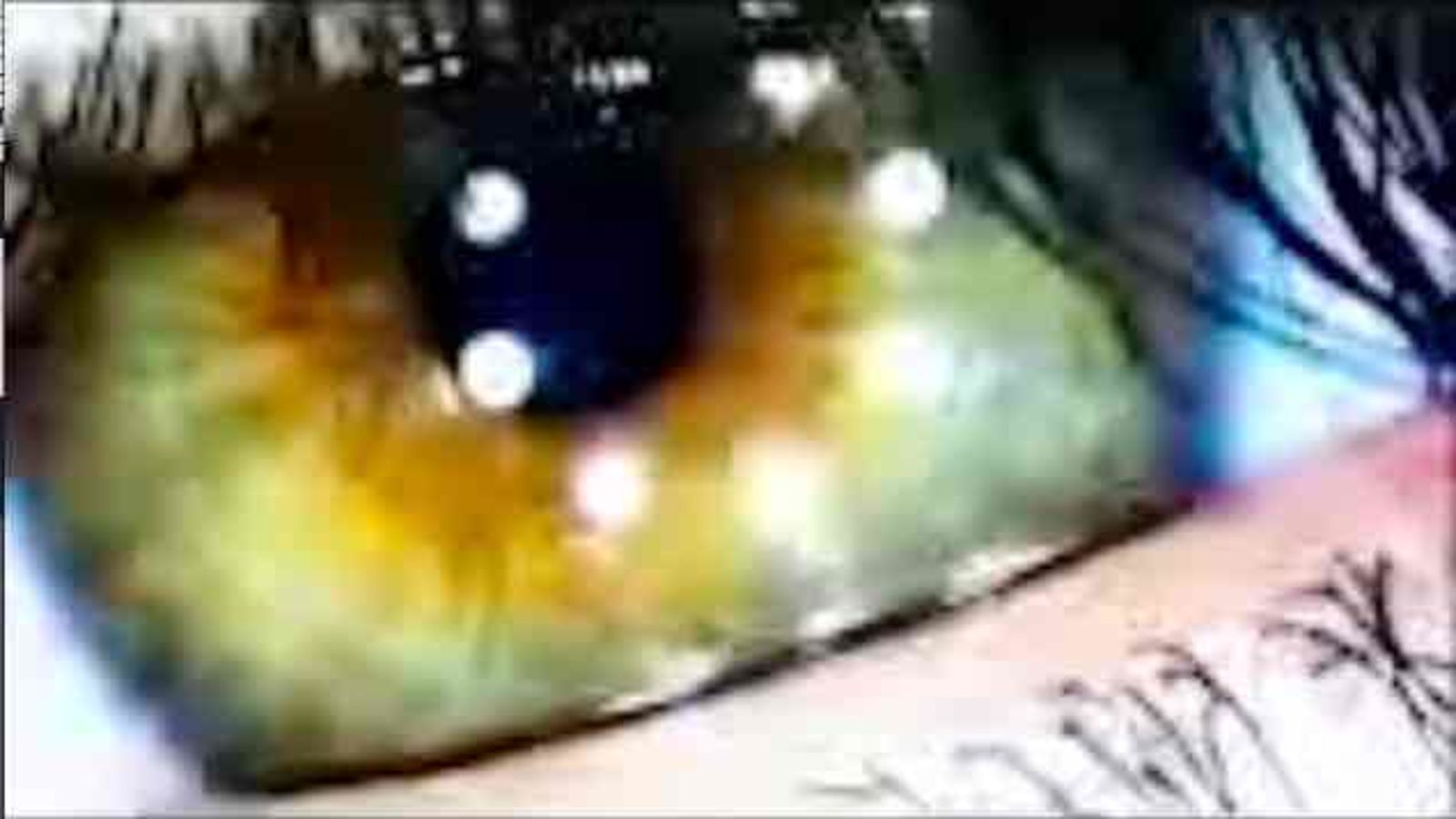
Still from: Azadeh Emadi, Entangled Orb (Glasgow, 2020, 5:07, 4.8 MB, 8:00 processing time)
From: Rahel Spöhrer & Joshua Wicke
Sent: Thur 2021-4-1 11:45 AM
To: Laura Marks
Thank you for your rich thoughts, dear Laura!
What stuck with us since you wrote was the idea that haptic visuality is not only messing with the dichotomy between beholder and beheld but also with that of activity and passivity: it seems to us that much of what you describe is the activity of letting something happen.
Joshua: "I remember a performance in Berlin, years ago, where the light was so dim that the actions on stage were constantly on the threshold to invisibility - dissolving contours bleeding out into their surroundings, merging with the floor, the light waves shedding different shades of dimness on them. Remembering that experience the title of one of your essays comes into mind: ”Loving a disappearing image“.
We´d love to hear more of your thoughts on haptic visuality and its relation to disappearance - especially in a live-performance, where the beheld can actively withdraw from being seen.
So curious to hear your associations on these topics!
Warmly,
Rahel & Joshua
From: Laura Marks
Sent: Thur 2021-4-14 20:16 PM
To: Rahel Spöhrer & Joshua Wicke
Dear Rahel and Joshua,
Thank you for more wonderfully provocative questions!
I like this phrase, “the activity of letting something happen.” The binary of active and passive is so crude, and (I believe in most cultures) privileges activity as superior to passivity. Yet to undergo an experience is an act, sometimes a life-changing one. It requires groundedness to be able to open ourselves to experience; judgment to determine when such openness might actually bring harm upon us; and most of all a subtle sense of what we might become if we engage with the experience. All superior qualities in my opinion!
The problem is partly with languages like ours that use the copula—"the floor has been swept,” “the child was struck,” “the audience is spellbound.” Arabic, for example, has verb structures for the activity of receiving an action.
You write so movingly about your experiences of performances! Thank you for connecting this one with “Loving a disappearing image.” (I wrote that essay in resistance to the common notion, from Freud, that successful mourning requires us to separate ourselves from the loved one whose loss we are grieving.) Darkness or disappearance, during a spectacle like a performance or a movie, can playfully tease the audience about our expectation that things will be available to vision and then to cognition. It’s not an emergency, so it’s an opportunity to let go of that expectation without too much danger. In this way performances, movies, and other art forms allow us to test and strengthen our capacity to be open and relinquish control.
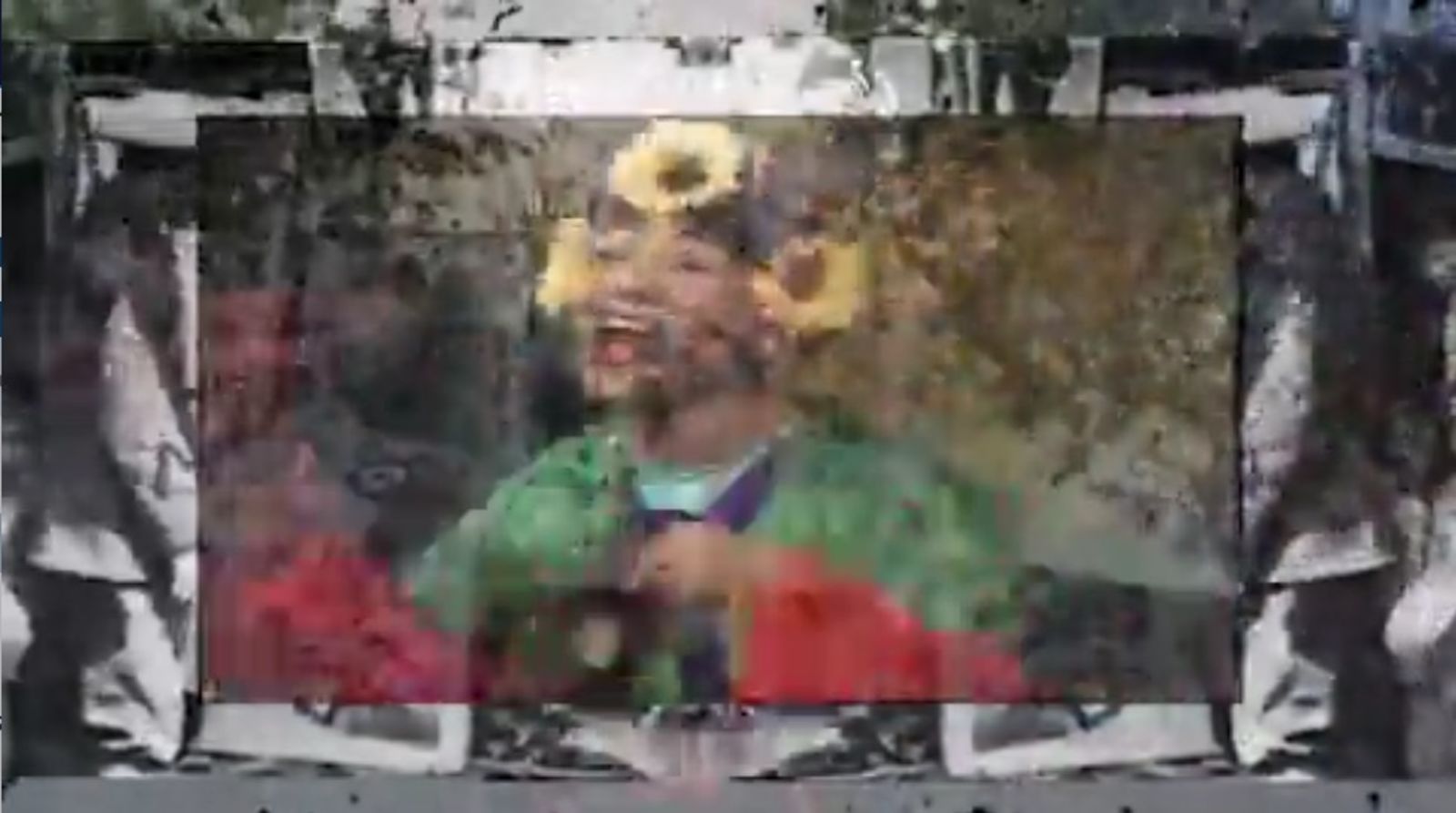
Still from: Hân Phạm, Once Upon a Time (Vancouver, 2020, 5:17, 5.67 MB, 14:00 processing time)
From: Rahel Spöhrer & Joshua Wicke
Sent: Thur 2021-4-1 11:45 AM
To: Laura Marks
P.S.: Speaking of theatre that migrates to the screen: How do you create haptic entanglements via screen these days, sitting in Zoom meetings all day long? How do you create haptic and intimate connections over distance and, to tie in with your current research, how do you do that without increasing the large carbon footprint of streaming media?
From: Laura Marks
Sent: Thur 2021-4-14 20:16 PM
To: Rahel Spöhrer & Joshua Wicke
Thank you for asking! Above I mentioned cultivating our tactile and multisensory imagination. It is an extension of embodiment that requires a little more mental effort. Even when people turn off their video in a videoconference, we can hear their voices, see their names, and see the comments they write. It’s as though they compress down very small in order to be carried through the networks, and then we reconstitute them on the other side. Like receiving a letter, touching the handwriting, smelling the paper, and reading the words the writer took care to compose—if we also care, we can re-create that person in our imagination. If, on top of all this abundance, we also see a video of our correspondents, performing for us in their funny little boxes, we have more than enough sensory and cognitive information.
As you know, for the past year I have been working on the carbon footprint of streaming media, which is estimated to contribute a staggering 1% of global greenhouse gas emissions. This environmental disaster in the making has been amplified during the pandemic, by those of us in wealthy regions relying on streaming media, social media, games, and videoconferencing during our sequestration. This research has brought me right around to my early work on haptic video, because I am arguing that we can get a satisfying and more intimate experience by engaging with streaming media in low resolution.
To acknowledge the materiality of streaming video or video conferencing, we embrace the qualities that might annoy us, like slow loading, low resolution, and compression. They are signs of the networks, platforms, and devices that are struggling to bring the audiovisual image to us. Loving the disappearing streaming image, we acknowledge the territories across which networks span, the efforts of electronic circuits and the engineers who designed them, and the energy sources—fossil fuels, nuclear energy, renewable energy—that support all this effort.
So I am in favor of turning off the camera, or using audio-only formats like teleconferencing (yes!) and the Clubhouse platform. Or at least lowering the resolution (which platforms like Zoom do automatically) and decreasing the frame rate. Even if the image of you is only 32 pixels, I can still get a sense of your movements and expressions, especially when the image is accompanied by the sound of your voice. Rather than consuming your image in high resolution, I need to lean toward you and engage with your image, as with haptic visuality. And unlike a high-resolution image that disavows its material support, a small-file image acknowledges the material, human, and energetic resources that support it. It allows us to love the image while acting lovingly toward the planet.
From: Rahel Spöhrer & Joshua Wicke
Sent: Thur 2021-4-1 11:45 AM
To: Laura Marks
P.P.S: Btw. We fell in love with your description of a haptic subjectivity, a subjectivity that is constantly transformed by its encounters with the world, and deeply interconnected with others, and with all matter. Maybe we had hoped that theatre could eventually become a space to acknowledge, imagine, train and become such subjectivities.
From: Laura Marks
Sent: Thur 2021-4-14 20:16 PM
To: Rahel Spöhrer & Joshua Wicke
Thank you. I’m so happy my ideas have inspired you. I agree with you that theatre can train people in these capacities and help us to feel the intimate connections in which we are enmeshed. Thank you for these beautiful questions.
